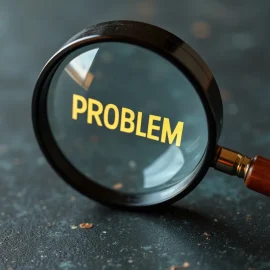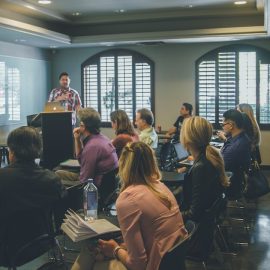

This article is an excerpt from the Shortform book guide to "How to Become a Straight-A Student" by Cal Newport. Shortform has the world's best summaries and analyses of books you should be reading.
Like this article? Sign up for a free trial here.
Are you a STEM student? How should you study for STEM courses?
Studying for STEM courses is much different than humanities courses. In How to Become a Straight-A Student, Cal Newport explains how you should go about preparing for your STEM tests.
Here’s how to ace your STEM tests so you can pass the class.
Studying for STEM
If you’re studying STEM, Newport argues that you must understand how to solve problems. Most STEM courses don’t require you to understand overarching themes; rather, you need to master the problem-solving techniques and formulas presented so you can apply them to your own work. (Shortform note: Other experts argue that STEM classes do have overarching themes. Moreover, they argue that understanding what those themes are and how a particular point relates to them will help you stay focused in class.)
So how can you master these techniques? Newport argues that the first step is to skip the reading because your professor will describe those exact techniques to you during class. Instead, bring the reading to class to help you follow the lecture, and only review the text in-depth if you’re still lost after the lecture. (Shortform note: You may need to adjust this strategy, as some professors operate on the opposite structure: They assign readings that give you a baseline understanding of the material, then focus on answering questions and clarifying issues during class.)
Then, once you get to class, take good notes: Write down every problem and answer you hear, and do your best to write down each step of the solution—prioritizing the steps of the solution to the first problem, which is when your professor will present the most detailed explanation. If you don’t understand a specific step, Newport recommends asking questions. Clarifying your understanding during class will save you hours of studying STEM outside of it.
(Shortform note: Newport’s note-taking strategy assumes that your STEM lectures will primarily be explanations of problems—but what if you’re taking a class like biology, which often doesn’t involve sample problems but also doesn’t lend itself to the Q/E/C method? Try the Cornell Note-taking system: Draw an upside-down T on a piece of paper. Take detailed notes on the right side of the page, and use the left side to concisely describe the major concepts. After class, summarize what you’ve learned in the bottom section.)
Finally, Newport argues that you need to work efficiently on your problem sets. To do so, first space out your problems: Select a few to try solving each day—and if you can’t, go about your day while mulling over them occasionally. Eventually, inspiration will strike, and you’ll come up with a solution.
Second, Newport suggests that you work with others if you’re still stuck—as long as it’s not against the rules. Become a regular at your teachers’ office hours to ask questions, and schedule a weekly group study session with some other STEM students in the course to work through any problems that confuse you even after you’ve thought about them for a while.
Why Newport’s Problem-Solving Strategies Work
In Hyperfocus, Chris Bailey elaborates on why mulling over your problems periodically throughout the day can trigger a creative solution. He explains that, even if you’re not actively working on an unsolved problem, your brain continues to work on it subconsciously. As it does, your brain connects all the stimuli you encounter to your problem. Sometimes, the stimulus your brain encounters reminds it of something else it already knows. It connects this old information (or the new stimulus, which may itself be the information you were missing) to your problem—and solves it.
Bailey also explains why you should only work on a few problems at once: Your brain can only actively process a finite number of things. If you focus on too many problems at once, your brain will forget about one of the problems. If this happens, it won’t remain in your subconscious, so you won’t be able to connect new stimuli to it and solve it.

———End of Preview———
Like what you just read? Read the rest of the world's best book summary and analysis of Cal Newport's "How to Become a Straight-A Student" at Shortform.
Here's what you'll find in our full How to Become a Straight-A Student summary:
- How to ace your college courses with just a few hours of studying each day
- How to combat procrastination and write better papers
- Study methods to prepare for different types of exams






